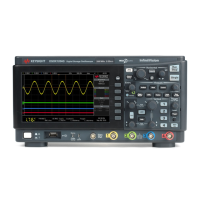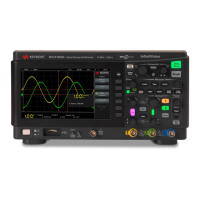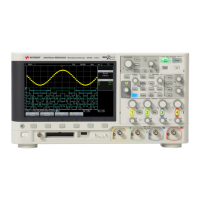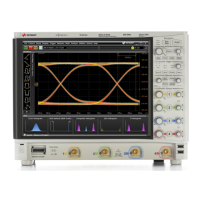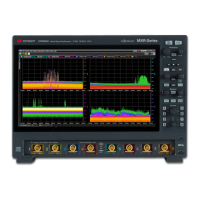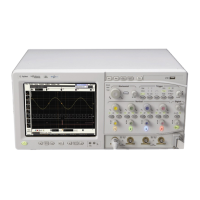SPI Triggering and Protocol Decode 28
Keysight InfiniiVision HD3-Series Oscilloscopes User's Guide 351
Use the Binary method if you need to enter "don't care" bits (X) within a nibble.
If all bits in a nibble are "don't care", the hex nibble is displayed as "don't care"
(X). When all bits in a nibble are 1s or 0s, the hex value is shown. Hex nibbles
that contain a mix of 0/1 bits and "don't care" bits are displayed as "$".
• #Bits — Enter the number of bits in the serial data string.
The number of bits in the string can be set anywhere from 4 bits to 64 bits. The
data values for the serial string are displayed in the MOSI/MISO Data string in
the waveform area.
• MOSI Data or MISO Data — Enter bit values of 0 (low), 1 (high), or X (don't care).
The data value is left-justified in the frame when setting up the trigger. If the
base is Hex, the first digit represents the first 4 bits after the start of frame,
continuing with the remaining digits in the data value.
Interpreting SPI Decode
• Angled waveforms show an active bus (inside a packet/frame).
• Mid-level blue lines show an idle bus.
• The number of clocks in a frame appears in light-blue above the frame, to the
right.
• Decoded hexadecimal data values appear in white.
• Decoded text is truncated at the end of the associated frame when there is
insufficient space within frame boundaries.
